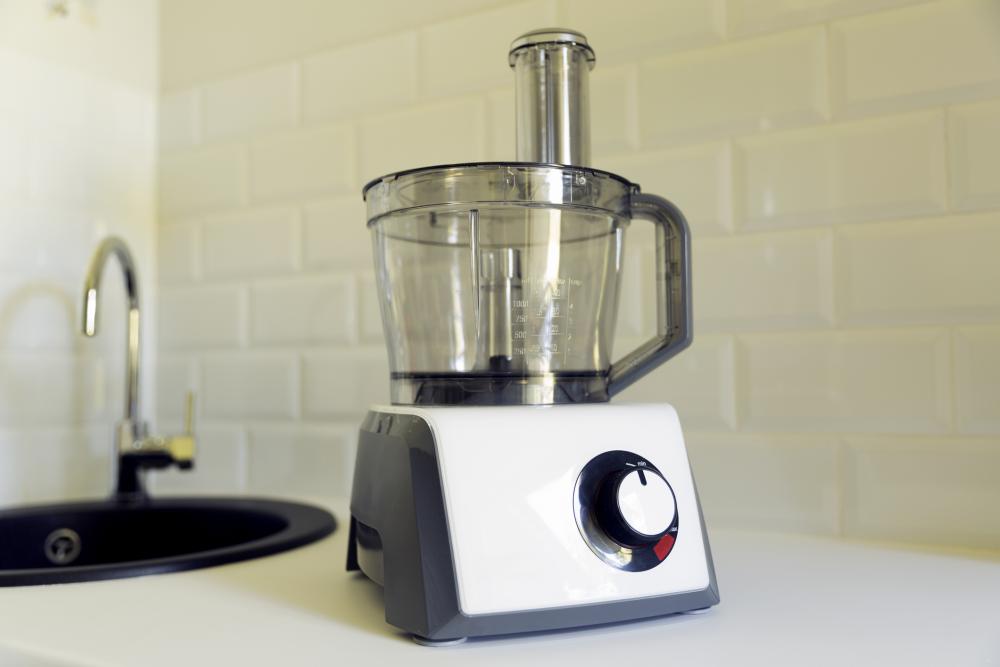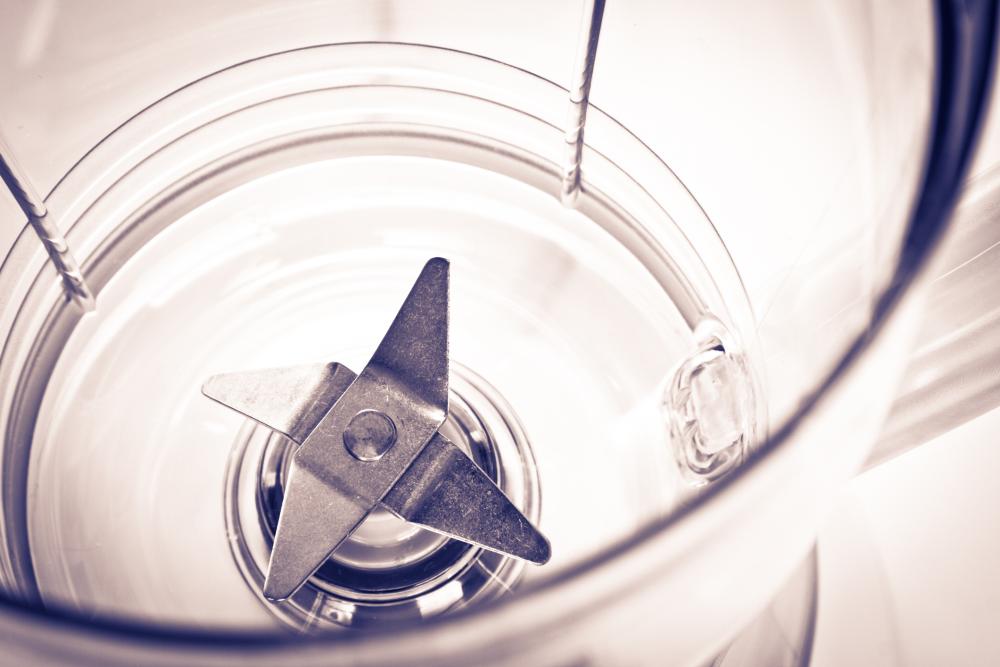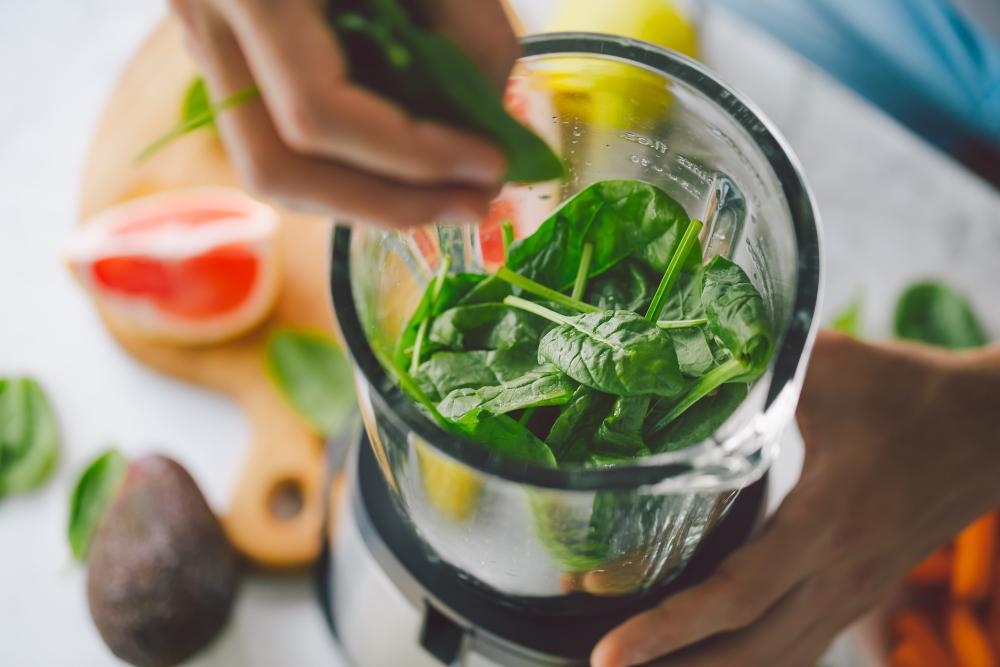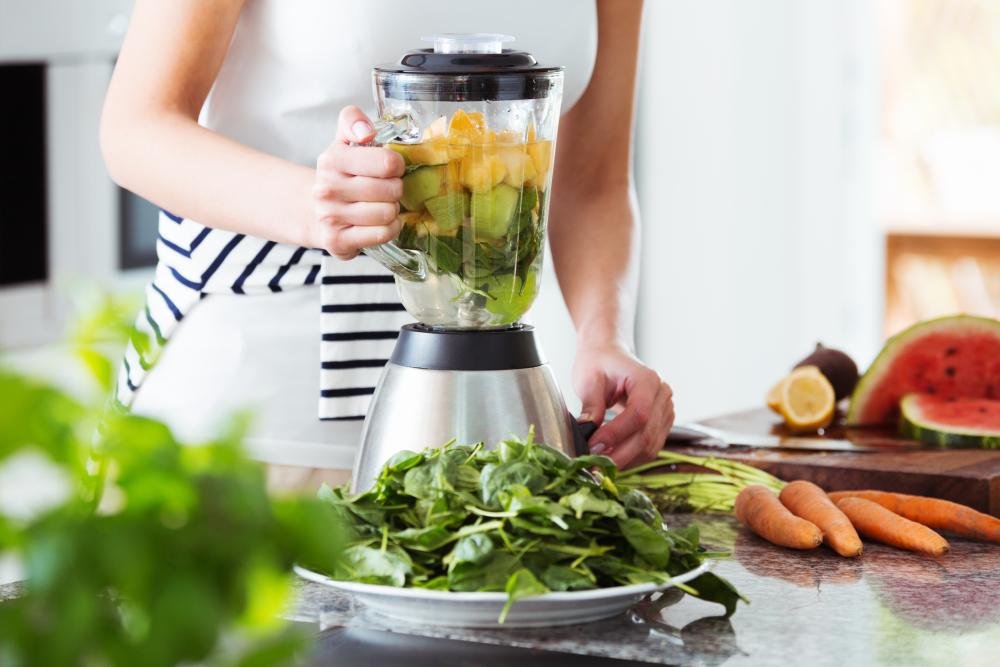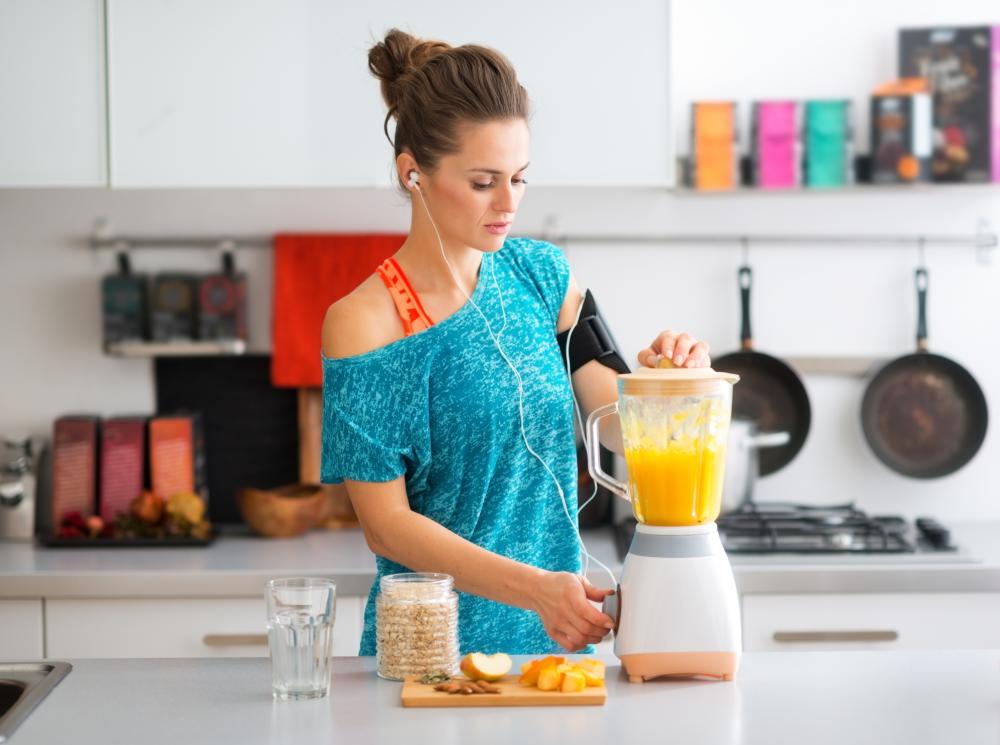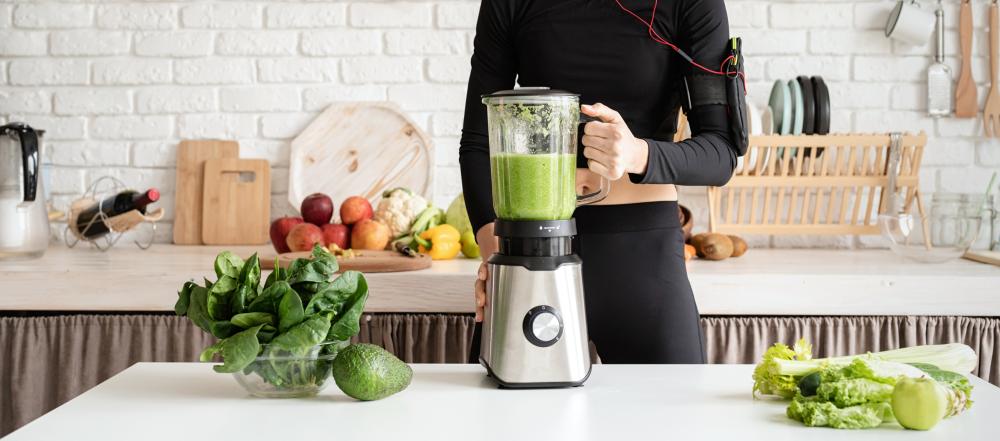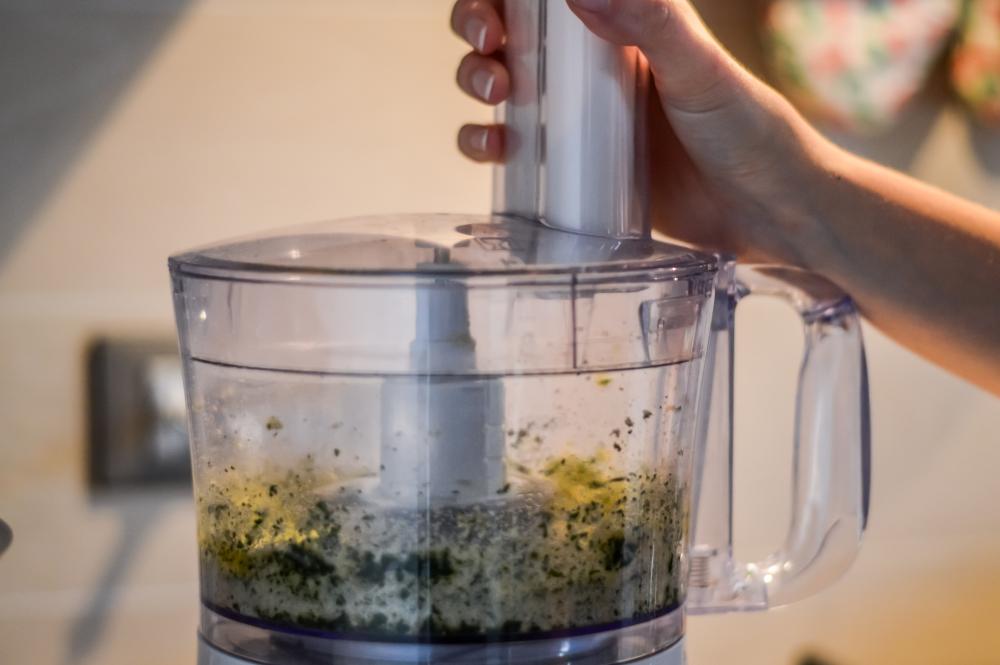Blenders vs. Food Processors: What Sets Them Apart?
We live in a modern-day era, and this means that all aspects of our lives need to keep up with what technology has to offer, including the appliances that we have in our kitchens.
For example, both blenders and food processors are now a common household item, but many users still have a hard time understanding just what sets these two devices apart because, while this may come as a shocker to many, these 2 are very different from one another.
Sure, they are both appliances that process food, they both look very similar, and they even use similar working principles to get the job done ( motorizes bases with dials and buttons, clear bodies, high-speed rotating blades, etc.), but they aren’t intended to be used for the same purpose.
If you too find yourself mistaking one for another frequently and want to finally learn how to tell them apart and know when to use one over the other, go ahead and continue reading this article, as we will be going into great details regarding what are the biggest differences between a blender and a food processor.
What Is a Blender?
We can’t start an article where we talk about the differences between 2 devices without first knowing exactly what each device is, and we’ll be starting with the blender.
As you can probably tell from the name, a blender is a type of electrical kitchen appliance that is meant to blend together food ingredients that are either solid, liquid, or both, to the point where the end result is a homogenous mix.
Blenders are typically made up of 4 main components:
- A motorized base
- A pitcher (which can be made of plastic or glass)
- A set of blades
- A top lid
Blenders will usually feature several programming options, and you can access them from the motorized base, and these can be adjusted and changed from a control panel filled with buttons, dials, LCD screens, and more.
Since a blender’s purpose is pretty straightforward, there’s little need for complicated settings and controls, and the most common things that you can change are usually the blending speed, or the ability to switch between continuous blending and burst-blending.
A blender’s pitcher is usually cylindrical or conical in shape, and they usually feature one or two handles and a spout that makes pouring the blended mix easier into other containers.
Conical pitchers are the most efficient since, during runtime they allow the ingredients to be directed and sent to the blades, thus creating a continuous cycle that repeats itself until everything inside the pitcher has the same consistency.
As for the rotary blades, these are always screwed to the bottom of the pitched, and they are always made to be removable to make cleaning a lot easier.
The lid’s purpose is to keep the blended mix from spilling out since the rotary blades apply a centrifugal force to the mix, which causes the now liquified blend to Climb up the pitcher’s walls, and therefore rise in level.
The lid is also always equipped with a removable plug, and this is used to add subsequent ingredients to the blend even while the blender is already running.
Speaking of the lid, there is one drawback that you will notice when using a blender, namely that even if you do put on the lid to prevent spilling, blenders tend to be inefficient when you fill the pitchers all the way to the top.
In fact, most recipes recommend that you fill the pitchers only about 3/4 of the way up, and that is also why pitchers are only graded up to a certain level, and not until the very top.
More so, blenders don’t work very well with dry ingredients, and most of the time, you might actually have to add some extra water or some other kind of liquid filler in order to use it properly.
Blenders are most often used to make fruit purees, vegetable smoothies, and even soups. Basically, if you want to turn something solid into a liquid, or if you want to turn a thick liquid into a much thinner liquid, a blender is what you need.
What Is a Food Processor?
Unlike blenders, food processors are a bit more versatile in terms of what they can do, as they are ideal for pretty much any other scenario where a blender couldn’t cut it.
For example, while a blender works best with liquid-based foods, a food processor can be used to chop vegetables, shred meat, mix dough, and more. Basically, imagine anything you’d imagine that would take a long time to do by hand, and there’s a very good chance that a food processor can do it better and faster.
Just like blenders, food processors are also made up of 4 basic components:
- A motorized base
- A pitcher (which can be made of plastic or glass)
- A set of blades
- A top lid
Just like a blender, most processing settings are located on the motorized base’s control panel, and this control panel is usually a lot more complex than that of a typical blender.
Additionally, a food processor’s pitcher is usually larger and more spacious than that of a blender, since it doesn’t rely on gravity or centrifugal forces to send the food ingredients towards the blades.
Speaking of blades, food processors come with a much wider assortment of blades, one for each job a food processor is capable of.
For example, you have dedicated blades that are used for shredding, slicing, grating, chopping, etc, and since food processors will often be used to perform one than just one task within a short time frame, the blades are much easier to remove than that of blenders.
Because of the shape of the pitcher and thanks to the wide variety of blades, food processors don’t share the same weakness as blenders when it comes to working with dry foods.
Not only that, but food processors will work just fine if you fill the pitcher all the way to the top, so processing larger quantities of ingredients is much easier since it can be done with fewer refills.
On the other hand, the shape of the pitcher means that a lot of material can end up outside the reach of the blades, so a food processor isn’t that good at processing liquids.
When to Use a Blender Vs. When to Use a Food Processor
If you need a brief rundown of what a blender can be used for versus what a food processor can be used for, check out the table below:
| Food | Food processor | Blender |
|---|---|---|
| Soup / Puree | ❌ | ✔️ |
| Smoothie | ❌ | ✔️ |
| Dressing | Can work | ✔️ |
| Nutt butter | ✔️ | Can work |
| Chopped / Minced Fruits | ✔️ | ❌ |
| Chopped / Minced Vegetables | ✔️ | ❌ |
| Shredded cheese | ✔️ | ❌ |
| Dough | Can work | ❌ |
| Dips | ❌ | ✔️ |
| Shakes | ❌ | ✔️ |
| Sauces | ❌ | ✔️ |
| Hummus | ❌ | ✔️ |
Blenders Vs. Food Processors: Similarities
As you may have noticed already by the way we’ve described both the blender and the food processor, there are many similarities between the two devices:
- Both devices have a motorized base
- Both devices have a control panel located on the motorized base
- Both devices feature containers where the food ingredients are stored during processing
- They both use some sort of rotary blades in order to process the foods.
- They can both be used in order to perform certain tasks (e.g. pureeing or crushing ice).
Another reason why many users find it hard to distinguish between the two devices is that many manufacturers create both blenders and food processors, and if you’ve ever when to the kitchen appliances aisle in an electronics store, you’ll notice that they are placed next to each other, and this can make things all the more confusing.
Blenders Vs. Food Processors: Differences
Now that you know exactly what a blender and a food processor are, and because we also talked about the similarities, it should be easier to understand what sets these two devices apart exactly.
A summary of this entire section would look something like this:
Food processors perform a wide variety of tasks that can help with food preparation, while blenders just pulverize and combine wet and dry ingredients.
Of course, things are a bit more complex than that, as you are about to see.
How They Are Used
Blenders should always be used whenever you need to create a smooth liquid or semi-liquid mixtures that are as homogenous as possible. So, if you’re looking to create a smoothie, a cream soup, a dip, or anything else of the sort, then a blender is what you need.
Every aspect of a blender’s design, no matter how subtle it may seem, exists for that purpose alone, from the conical shape of the pitcher to the design and angle of the rotary blades.
Besides, blenders make use of gravity and centrifugal forces to send the ingredients to the blades until the large solid pieces are reduced to nothing more than a very fine smoothie, although you must keep in mind that you must have wet ingredients to do so, or at least add some water or other liquid filler.
On the other hand, food processors are much more versatile in terms of what they can do, as they can chop, shred, slice, and grate food thanks to the wide variety of blades and other attachments that they can equip.
Of course, this is just the tip of the iceberg, since more premium models can do way more than just that because they have a much larger number of blades and tools.
Thus, if you’re looking to take some solid ingredients and process them in such a way that they are smaller but still solid, then a food processor is what you need.
The Rotary Blades
The rotary blades are the thing that ultimately set food processors and blenders apart since they are basically the components that have any direct contact with whatever food ingredient you are trying to process.
For starters, blenders usually only have one blade assembly, and while it may be detachable to make cleaning easier, you may need to use a screwdriver. On the other hand, food processors have a much large number of blades and attachments, one for each job.
In fact, newer models that that a step further and can have several blades for a single type of job, but each blade can do it in a specific way (e.g. chopping thinner slices, grating into finer pieces, etc).
Of course, food processors don’t just use blades, they also have non-sharp attachments as well, such as whisking disks, citrus squeezing attachments, dough beaters, peeling disks, and more.
Another key difference that concerns the blades of both a food processor and a blender is the sharpness of the blades themselves.
For example, a food processor’s chopping S blade is usually very sharp, allowing for precise cuts, similar to those you’d get if you used a typical kitchen knife.
On the other hand, a blender’s blades are meant to crush the components, so they are usually duller, but made from much more durable metal.
One last key difference is that a food processor’s blades and attachments are much easier to remove, since solid food objects tend to get stuck under the blades, and can otherwise become very difficult to remove.
On the flip side, since you’ll be using the blender to create liquids or semi-liquid foods, you don’t need to remove the blade as easily, since everything will pour out easily.
Motor Power
In order to achieve a very fine and smooth texture of all food ingredients post-blending, the motors that power blenders are usually a lot more powerful than that of food processors.
For example, top-tier food processors have 1300 watts motors, while regular blenders have an average of 1500 watts.
FAQ: Learn More About Blenders and Food Processors
Can a food processor be used as a blender?
The short answer would be yes. However, you must make sure that there is enough liquid in the pitcher so that it will act as a base for your smoothie, since the natural moisture within your fruits or vegetables may not be enough to create a smoothie, and you may end up with a spread instead.
Moreover, many food processors come with blender attachments that will make this easier.
Which are the best food processor and blenders?
It’s hard to determine which are the best food processors on the market since there are plenty of criteria to look for. However, in terms of food processors, many websites and users seem to agree that the Hamilton Beach Food Processor, while others consider that the Magic Bullet is the best blender in the world.
How is a food processor different than a blender?
The one thing that sets blenders and food processors apart from one another is their purpose:
- Food processors can perform a wide variety of food preparation tasks, including slicing, chopping, mixing, grating, etc.
- Blenders can only crush and pulverize until it turns the ingredients into a very fine smoothie
Can I put ice in a food processor?
Yes, you can. In fact, the ability to crush ice is one of the first things that many food processor manufacturers try to boast. Just make sure that you have the right blade attachments connected to the processor, throw in a few ice cubes, start the processor, and keep it working until you obtain perfect crushed cocktail ice.
Is a food processor worth it?
If you’re the type that likes cooking your own food instead of going for prepackaged meals, then you’ll be spending a lot of your time in the kitchen. However, you can greatly reduce some of that time spent by opting for a food processor instead of doing everything by hand, so to answer your question: Yes, a food processor is worth it.
What is a good wattage for a food processor?
The power of a food processor is a key factor in determining its overall performance, and that is why it is among the first things that you need to look at when browsing for a brand-new one.
The power of a food processor’s motor is measured in watts and, as a point of reference, it is usually somewhere between 500 and 1000 Watts. While blenders tend to have much more powerful motors, a food processor’s blades are a lot sharper, so they don’t need too much power in order to make then slice through your food ingredients.
Can you puree in a food processor?
Food processors can perform a wide variety of food processing tasks, including making purees, just as long as you use the right settings and blade attachment. However, if you’re looking to create a very smooth puree, it’s best that you use a blender instead.
Can you put dry ingredients in a blender?
Blenders can be used to blend dry ingredients under 2 conditions:
- The ingredients need to be completely dry, as any semi-wet food will stick to the walls and may not end within the reach of the blender’s rotary blades.
- Your blender needs to be specifically designed to handle dry ingredients, such as a dry blender that usually come with a spice grinder attachment.
However, if dry food is what you want to grind down to a much finer texture, you’re better off using a food processor instead.
Does ice dull food processor blades?
Ice is a very hard material, and even if a food processor or a blender specifically says that it can be used to crush ice, prolonged use for chopping ice will eventually cause the rotary blades to dull, weaken, and even break.
While you could always try and sharpen a blade that has dulled, there’s not much you can do about fissured or broken blades except replace them entirely.
Besides, constantly chopping and blending really hard ingredients such as ice can also have a negative effect on your food processor or blender’s motor.
Can a food processor chop onions?
Chopping food ingredients is one of the main things that a food processor can do. However, you need to keep in mind that the chopping is still done randomly, and the pieces will not be uniform in size.
Besides, if you overprocess onions too much, they tend to develop an after-taste. In order to avoid this, it’s recommended that you use a food processor’s pulse setting instead so that you can chop the onions in a more controlled manner, and prevent them from developing any weird flavors.
Blenders Vs. Food Processors: Conclussion
We’ve reached the end of our article, and we hope that you now have a better understanding of what sets a blender and a food processor apart.
While the two devices are very similar, they serve very different purposes, and because of that, it’s not a question of which of the two devices is better to have, since they are not meant to compete with one another, but rather do what the other can’t.
That being said, if you have the budget to buy both, then we recommend that you get both a food processor ad a blender, and with the help of this guide, you will know exactly when to use one, and when to use the other.
